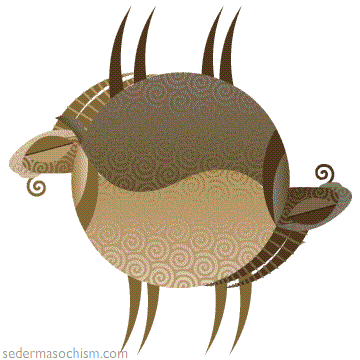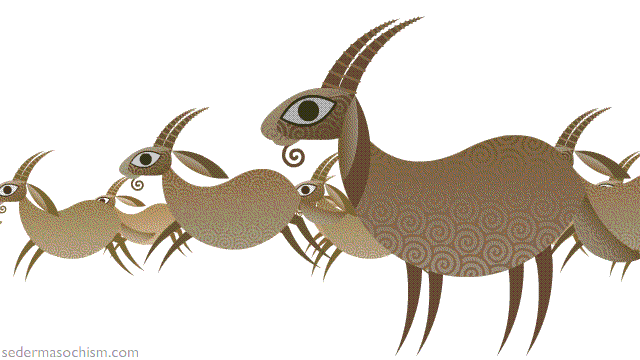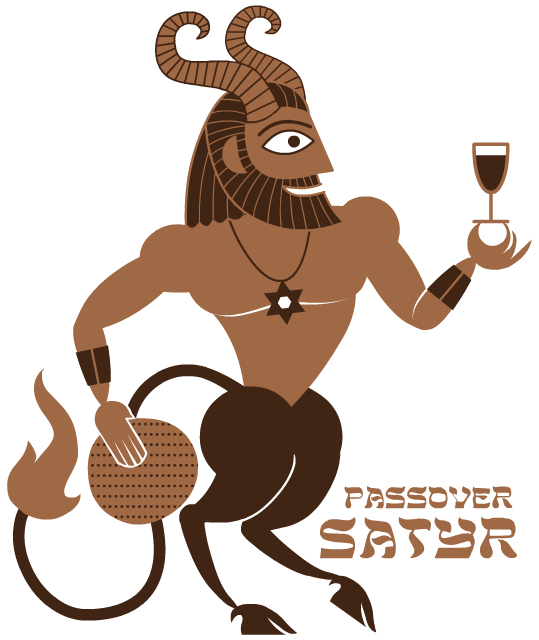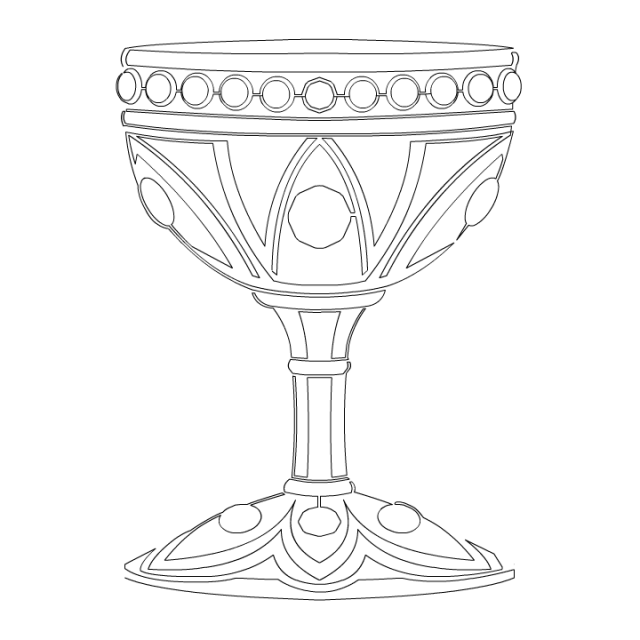Goats
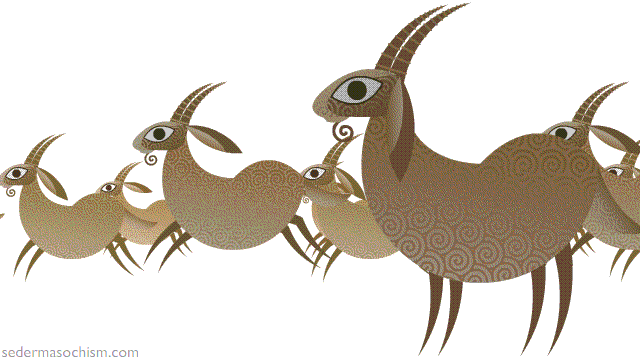 Yet another goat design for Seder-Masochism.
Yet another goat design for Seder-Masochism.
Oh look I’ve already modified it:
This goat is even simpler.
“we were slaves in Egypt”
…but we probably didn’t look this hot:
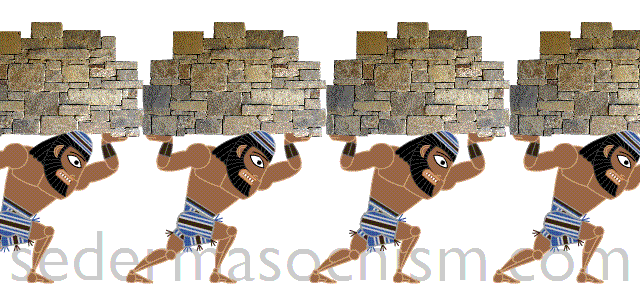
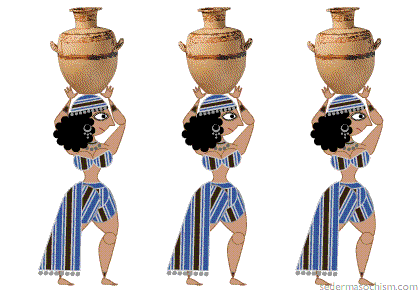
Character designs for male and female Hebrew slaves for Seder-Masochism. Yes I grossly exaggerate contrasting male and female traits like shoulders, hips and waists. It’s a cartoon. These guys are on a 27-frame cycle because that’s the closest beat to the song I’m using.
Passover Satyr
When I told a (gentile) friend I was making a movie about the Seder, she thought I said “satyr.” The idea cracked me up, but I didn’t illustrate it because who needs more associations of Jews with horns and cloven hooves? Until now. Here is the Passover Satyr.
I was worried this was in questionable taste. Too soon? But after posting this illustration on Facebook, so many people asked for a T-shirt that I set one up for pre-orders here.
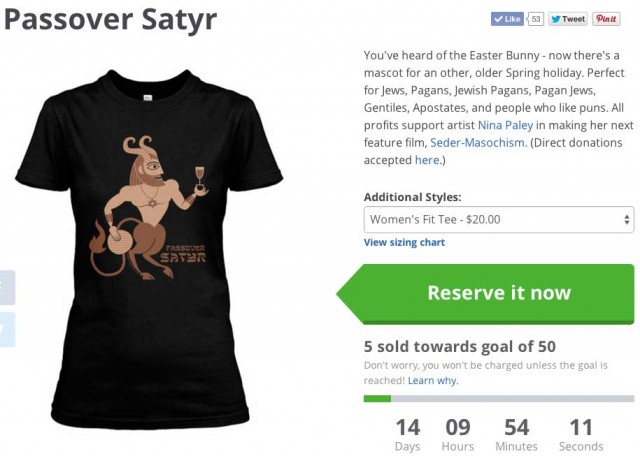 You have until November 3 to order one.
You have until November 3 to order one.
Death of the Firstborn Egyptians
The most recently-completed scene from my feature-in-progress Seder-Masochism.
written, directed, designed, animated, produced, etc. by Nina Paley
music from “Spider Suite” by The Duke of Uke and His Novelty Orchestra
sound effects by Greg Sextro
DONATE HERE: questioncopyright.org/sedermasochism
Based on Exodus 12:
21 Then Moses called for all the elders of Israel, and said unto them, Draw out and take you a lamb according to your families, and kill the passover.
22 And ye shall take a bunch of hyssop, and dip it in the blood that is in the bason, and strike the lintel and the two side posts with the blood that is in the bason; and none of you shall go out at the door of his house until the morning.
23 For the Lord will pass through to smite the Egyptians; and when he seeth the blood upon the lintel, and on the two side posts, the Lord will pass over the door, and will not suffer the destroyer to come in unto your houses to smite you.
24 And ye shall observe this thing for an ordinance to thee and to thy sons for ever.
25 And it shall come to pass, when ye be come to the land which the Lord will give you, according as he hath promised, that ye shall keep this service.
26 And it shall come to pass, when your children shall say unto you, What mean ye by this service?
27 That ye shall say, It is the sacrifice of the Lord’s passover, who passed over the houses of the children of Israel in Egypt, when he smote the Egyptians, and delivered our houses. And the people bowed the head and worshipped.
28 And the children of Israel went away, and did as the Lord had commanded Moses and Aaron, so did they.
29 And it came to pass, that at midnight the Lord smote all the firstborn in the land of Egypt, from the firstborn of Pharaoh that sat on his throne unto the firstborn of the captive that was in the dungeon; and all the firstborn of cattle.
30 And Pharaoh rose up in the night, he, and all his servants, and all the Egyptians; and there was a great cry in Egypt; for there was not a house where there was not one dead.
*****
LYRICS by David King, aka Duke of Uke:
DEATH: Falling stars you wished upon
are cinders now and now they’re gone
their residue festoons my fetid field.
Unfeeling husks of lovers past
the shells are all that ever last
I’ve taken everything that they concealed.
Whoever told you life was fair?
Look around you, everywhere
the cruelty of nature is displayed!
Why the scorn?
Why the surprise?
Everything that’s born must die
and it isn’t I who made the world that way.
What wicked little twist of fate
placed you her upon my plate
Here, where no one hears your cries?
Where was your god to steer you through
Perhaps your god’s forsaken you
Otherwise why lead you here to die?
BA (spirit of the dead): I, I know the way how
I’ll melt away now
I know the way.
I’m feeling bliss now
Dissolved to mist how
strangely I go
away
Now I finally know
DEATH: It’s merely moments now,
moments now until
your feeble flesh bends to my will
and it will
so rest your weary head.
There’ll be no pain,
no pain at all
as everything you are dissolves
Your fate resolved
upon my silky thread.
BA: I, I know the way how
I’ll melt away now
I know the way.
I’m feeling bliss now
Dissolved to mist how
strangely I go
away
Now I finally know
(repeat)
The holy grail of quilting design
Single-line art is the holy grail of quilting design: the sewing machine head can stitch the entire design without starting, stopping, or breaking thread. To illustrate this for an upcoming talk I drew a holy grail as a single-line drawing. I did this by hand in Flash, and made this simulation of a simulator by deleting line segments one at a time.
I would love a program that intelligently automatically converts my line art into single-line art. Theo made something like that already, which preserves all the line segments and relies on back-tracking. But I’d also like something that replicates what I did here by hand: removing and adding small line segments so no back-tracking is needed. It would need to analyze which smaller line segments could be sacrificed, and which segments could be doubled (parallel lines can be easily added to a design like this).
You need single line art for automated quilting, and that’s what we do. But getting from regular line art to single-line art is currently no small task, for humans or computers.

